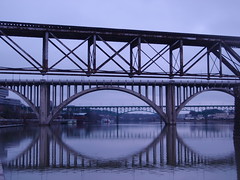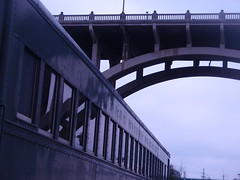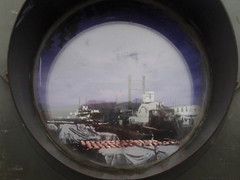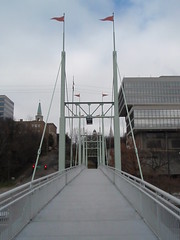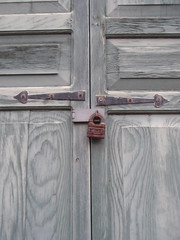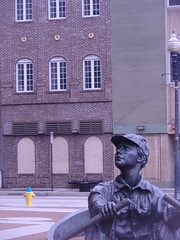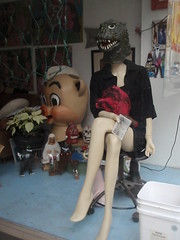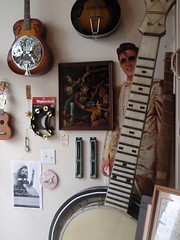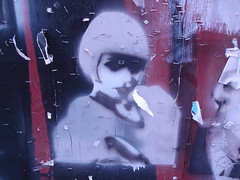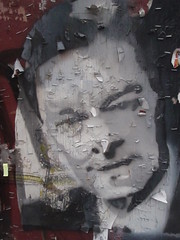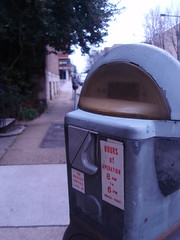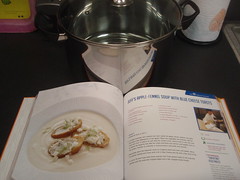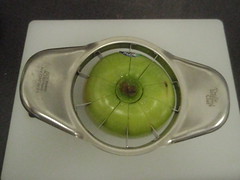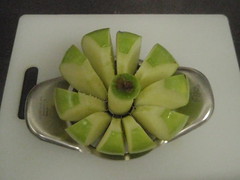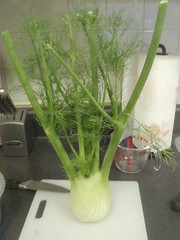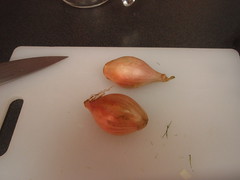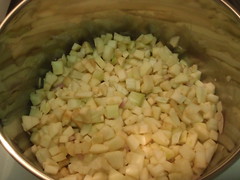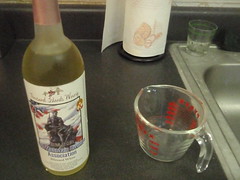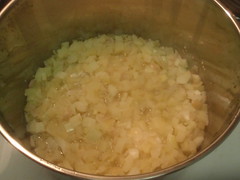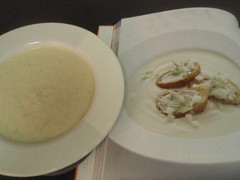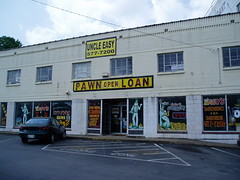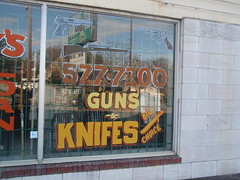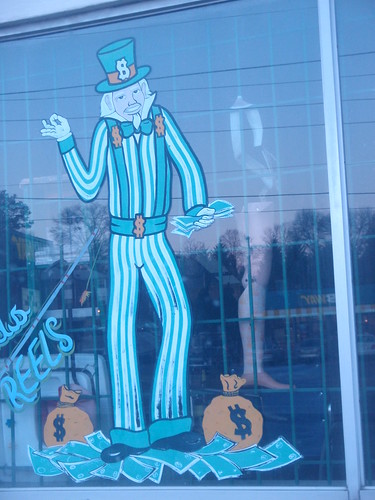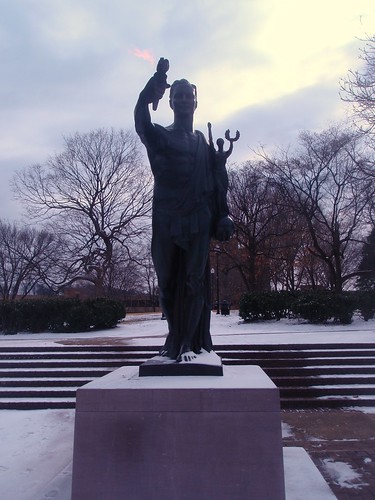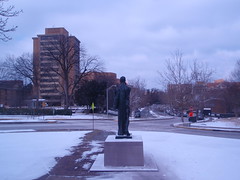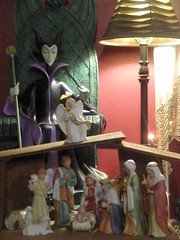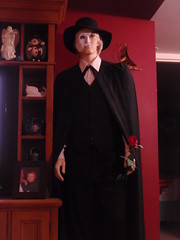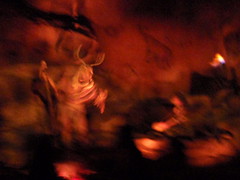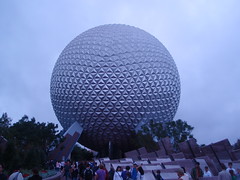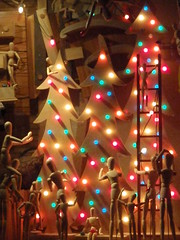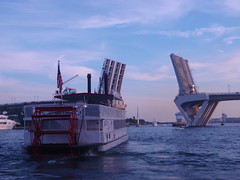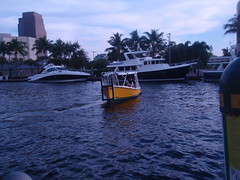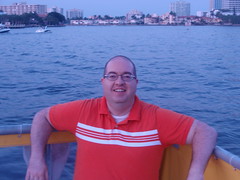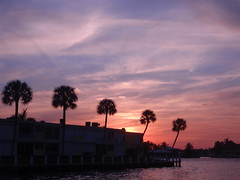Just like I did
last year and the two years before that, I resolved again this year to read 52 books by the end of the year. For the first time in the four years that I've made this resolution, I actually hit 52, and even managed to go one over, so I'm kind of proud of myself.
I do have a few qualifications to make, though. I do not count cookbooks, even though I read eight or nine of them this year, because I don't sit down and read every recipe cover to cover. I just page through and read the recipes that look or sound good. I also do not usually count comic collections or trade paperbacks, although this year I made one exception to that rule. Those are the only two rules I have for keeping this list. I don't worry about length, since a short book will be balanced out later by a long book.
For a while, it didn't look like I would make it. In July, halfway through the year, I realized that I was still in the teens and moped about it for a while, but then suddenly in September I decided not to give up, and staged and end of the year reading rally. I'm no quitter!
Except for in February, when I quit going to the gym.
But hey, at least I kept one of my resolutions.
Here are my 53 books, with brief thoughts and links to Amazon:
1) Robert Mayer's
Superfolks was hailed by comic writer Grant Morrison as the novel that set the foundation for the modern comic book, and he seems to be right. There's a lot of violence and a lot of sex, and large parts of the plot seem to have been lifted by Alan Moore as the basis of "Watchmen", but the book is hindered by bad writing.
2) Bill Bryson's
The Lost Continent is a book where Bryson gets in a car and road trips around America, staying at cheap hotels, eating in roadside restaurants, and stopping at tourist attractions. I can see why people thought he hates America, because he seems to miss the whimsy in a lot of things. For example, he thinks Gatlinburg is a terrible eyesore, but somehow misses that that's Gatlinburg's charm. He really didn't like Carbondale, Illinois, either. His writing is still funny, but this book also seems somehow embittered, a tone I haven't caught much in his other stuff.
3) Amy Sedaris'
I Like You cracked me up. It's a recipe book, party guide, rabbit care manual, arts and crafts book, and sometime memoir, all rolled into one. It also has a lot of cute pictures.
4) Marion Roach's
The Roots of Desire explored the myths and meaning of red hair in modern society. This felt like it should have been interesting, but wasn't, the same way that book about left handed people I read a couple years ago should have been but ended up being totally boring. This wasn't as boring as that, but the author promised an equal consideration of science and myth, and the science was only one chapter while the myths were the rest of the book. In covering the meanings of red hair, for example, it went into stuff about red hair being a mark of witchcraft in the middle ages, and how people view redheaded men as weak of character and redheaded women as sexpots, but then every time she brought up something like that she immediately contradicted it. "Red haired men are considered weak... except the Vikings. And red haired women are sexpots... well, except for the virgin queen of England."
5) Mary Shelley's
Frankenstein turned out not to be the story I was expecting. No trips to graveyards, no monsters hooked up to metal towers with lightning rods, no hunchbacked assistants. It's still a good book, but I never realized how much my conception of the book is shaped by Hollywood.
6) Svetlana Alexievich's
Voices from Chernobyl was a disturbing oral account of the Chernobyl disaster, told through hundreds of interviews with Russian people. Jeannie and Bryan also read this book because it was part of some campus book club, and when we were talking about it I was trying to explain to them that no one in America really knew how bad it was at the time, because the world was a very different place then and CNN couldn't just fly behind the Iron Curtain for live reports. I lived in Alaska when this happened, and we weren't allowed to go outside at recess for two weeks because no one knew how much fallout or radioactive particles were coming over in the atmospheric currents. What I learned from the book is that the Russians didn't tell their people, either, so there were a lot of sad stories about things that could have been avoided.
7) Douglas Coupland's
Shampoo Planet continued the sad game he and I play, where I remember liking a couple of his books and keep reading them to find more that I like. while he keeps pretending he's going to write something else I really enjoy and then keeps not following through.
8) Douglas Preston and Mario Spezi's
The Monster of Florence is the story of how bestselling author Preston moved to Italy and found out that a serial killer murdered some people in his front yard. Preston and Spezi, an Italian journalist, begin investigating the case and are eventually accused of being accomplices. Spezi is arrested, and Preston is banned from Italy and must flee the country. If nothing else, this book has killed any desire I had to visit Italy, because their legal system sounds like a horrible nightmare.
9) Paco Underhill's
The Call of the Mall read like a dumbed down version of his previous book. If you've read
Why We Buy, you won't mind because you already know all the background, but if you haven't this will leave you with a lot of questions about the theories and accuracy of his work.
10) Bentley Little's
The Vanishing was about demon monsters in California and, being a Little book, freaky sex. I'm still not sure who or what vanished.
11) Barbara Delinsky's
Looking for Peyton Place is some chick lit that I accidentally picked up because it looked interesting. It claimed to be about a girl whose family was the basis for characters in
Peyton Place and her coming back to town to deal with that after the death of her mother, but turned out to be about sisterhood, finding a man, and learning important truths about yourself.
12) Julie Powell's
Julie and Julia was good, but I started out kind of annoyed. I can't put my finger on it, but Julie's "voice"/writing style grated on my nerves, and I think if I knew her in real life we wouldn't be friends. On the other hand, I had a lot of empathy for her when she talked about recipes and not knowing what a term meant or where to even find an ingredient, because that happens to me all the time.
13) Scott McCloud's
Zot! is the comic collection that I made an exception for an included on this list. It's the magical story of a girl named Jenny, who lives on our world in the late 1980's, and her interdimensional boyfriend who lives in the magical futuristic world of 1965 with flying cars and robot butlers and where everything, always, is fun. They try to stay together and stay themselves as Zot longs to be in our world and Jenny longs to be in his. Everything doesn't always work out perfectly, but it's a story that leaves you with hope and the feeling that everything really will be ok. I wrote more about
Zot and my feelings about comics in general back in July.
14) Douglas Preston's
Blasphemy was a decent enough thriller about a group of scientists trying to use a particle accelerator to see the origin of the universe. There are lots of religious crazies, gunfights, and a couple people getting burned alive.
15) Curtis Sittenfeld's
American Wife started out a little slow, and right when I wanted to put it down and give up the story took such a terrible turn that I was like, "Holy shit!" I know a lot of people said, "It's a thinly veiled novel about Laura Bush," but the main character here has more empathy, intelligence, and regret than Laura Bush seems capable of.
16) Anthony Bourdain's
The Nasty Bits was a fun collection of short essays. I'm a fan of Bourdain and a fan of food, so it was a good read.
17) Jeannette Walls'
The Glass Castle was the freshman class book at work and, as always seems to happen when I read books for this reason, I got annoyed. For starters, do we have to pick an apocalyptic childhood memoir every year? Did no one ever learn anything or build character by reading something else? What about the classics? The kids will learn more about the nature of humanity by reading
Lord of the Flies than they will by reading this. The other reason the book pissed me off was that I always feel mad when I see someone accepting genetic handcuffs against their own better judgement. If your parents are horrible, terrible people who ruined your life, the correct response when they follow you to your new life in New York is to slam the door in their face, not to invite them inside just because they're related to you.
18) Dominick Dunne's
People Like Us was like hanging out with an old, familiar friend since I've read it three or four times. It remains a snapshot of a certain class in a certain time, but can also still make me sad toward the end. I'm still saddened by Dunne's death this past year, even though I found him to be a snotty social climbing elitist at times.
19) Jane Austen and Seth Grahame-Smith's
Pride and Prejudice and Zombies took a moldy old classic and filled it with zombies and ninjas and fighting. People either love or hate this book, and I found it cute and funny.
20) Lincoln Child's
Terminal Freeze was diverting, but his books are all starting to seem the same: remote outpost, team of scientists, mysterious object/creature. I still like them, because they're kind of fun to plow through, but the fun stuff that originally made them seem kind of different is now starting to all seem very similar.
21) Bentley Little's
The Academy taught me that if you turn your public high school into a charter school everyone suddenly turns evil. Standard mindless shlock from Little, but with less violent S&M than his usual novels.
22) Mike Dash's
Satan's Circus was an account of the background and trial of Charles Becker, the only policeman ever convicted and put to death in the United States. It deals a lot with vice, corruption, Tammany Hall, and a lot of famous politicians. It's clear in the end that Becker was guilty of several things, but you can't help but agree with the author that maybe he was railroaded on the murder charge.
23) John Saul's
Faces of Fear teaches us that plastic surgeons are obsessive monsters, women are shallow, the most important thing is inner beauty, and gay guys make good parents. It was better than his last book, but that doesn't really make it good.
24) Christopher Ransom's
The Birthing House was disjointed and not nearly as scary as I was told it would be. At first I thought the choppiness might be thematic, but after finishing it I think it might just be lack of skill. Also, am I the only one who didn't know what a birthing house is? Everyone in the book was like, "Oh, yes, a birthing house," and I had to google it.
25) Ben Tyler's
Gay Blades was about an up and coming closeted young skater trying to claw his way to the top of the "Gold on Ice" skating tour, like
All About Eve on ice. There was a lot of gay sex, catfighting, and a little bit of ice skating, and also one scene where a skater screws another skater with a hammer handle, which seemed kind of not sexy to me, but the characters seemed to enjoy it. I guess the hammer handle is better than the hammer head.
26) Jonathan Franzen's
The Discomfort Zone reminded me that my own childhood and adolesence are tragically bereft of meaning and are distinctly unprofound. Everybody else has these earth-shaking, morally resonant stories and I just have that tragic Christmas when my grandfather wanted to buy us the GI Joe aircraft carrier and my mom said no because it was too big and my brother and I would never be able to share it. What am I supposed to do with that? The obvious answer, of course, is "not grow up to be a famous memoirist".
27) Christopher Moore's
Practical Demonkeeping was witty and fun and amusing like all of Moore's books that I've read, but a week or so later I can never remember what, exactly, I liked about them. It's kind of like when you have a good meal and feel full, but nothing about it is particularly noteworthy.
28) Donna Tartt's
The Secret History remains one of my favorite books, and I realized that the copy I have now, the fourth copy of this book that I've owned, is the one that I bought at the used book store by my hotel in Alexandria on the 6/6/06 at 6:06 PM trip with Dana (the date and time is a long story; I'll explain it on 10/10 this year, at 10:10 AM) when I thought that I had lost my third copy. After moving here and unpacking my books, I discovered that I now had two copies, and I thought that I had taken the Alexandria copy to the used bookstore but seem to have taken the other copy instead.
29) F. Scott Fitzgerald's
The Great Gatsby ended up on my reading pile because
The Secret History made me think of it. In high school I had kind of a literary man-crush on F. Scott Fitzgerald, and I've had to read this book both for high school and for college. While reading it this time, I realized that during the scene when Gatsby and Nick have lunch in downtown New York, meeting one of Gatsby's shady business associates, the murder and criminal case the associate is discussing is the one that book #22,
Satan's Circus, was written about. In both the high school and the college class that I had to read this book for, both teachers mentioned that we were supposed to see Gatsby's associate as unsavory, but neither teacher mentioned that he claims to be friends with an actual criminal and to have been involved in a famous murder trial. I'm wondering if neither teacher knew.
30) Mike Madrid's
The Supergirls was supposed to be a history of comic book superheroines and their depiction in relation to fashion, feminism, and the role of women in society throughout the twentieth century, and for the most part it was. I was disappointed, though, that the author sometimes bends the facts of comics a little to prove his points, most glaringly in the chapter about Wonder Woman. After a long chapter about her constant changes and how male writers have mishandled the character, he ends with glowing praise of current writer Gail Simone (whether her run is worthy of such praise is up for debate, especially as it is still in progress) and says that what Wonder Woman needed all along was a woman's touch. While that may or may not be true, he makes it sound like Simone is the first woman to write the character, ignoring Trina Robbins' very entertaining "Legend of Wonder Woman" miniseries and the fact that Simone was brought in to salvage the book after the unmitigated disaster that was Jodi Picoult's run on the title. The way he phrases it isn't an outright lie, but it's definitely misdirection in favor of his argument, and makes me question the things he's written in other chapters about characters that I'm less familiar with.
31) Frank Warren's
MySecret almost didn't get counted, on the grounds that it's a book of pictures. In the end I decided that they are pictures of words, so I'm still reading, and that it had more words on most of its pages than that ridiculous Lance Bass book I read last year. Every time I read one of these books, I wonder what I would write down on my post card, and I can never decide. I imagine that a lot of people struggle with this, as some people don't write it down because they don't want to share it with others, but some people don't write it down because doing so would mean admitting it to themselves.
If you're unfamiliar with the books, here are some examples from the on-campus version that Student Activities has put on for the past few years:
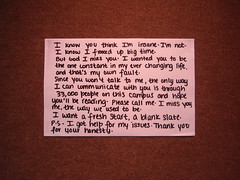
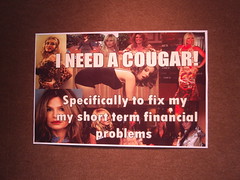

32) Carol Goodman's
The Seduction of Water made me glad I'd reread it, because I forgot what a good book it was. Yes, some of the plot was a little too dependent on random coincidence, but overall it's a nice, gripping mystery.
33) Amy Stewart's
Wicked Plants was a fun, anecdotal catalogue of the poisonous, destructive, painful, and hallucinogenic plants of the world. Reading it, I learned that at least one of the ornamental plants used in my apartment complex is deadly and poisonous.
34) James Patterson's
The Dangerous Days of Daniel X was a fast read, probably because it is intended for teenagers. The story is sort of interesting, about a shape changing alien orphan who takes up his parents' quest to defend Earth from other dangerous aliens, but the writing style is a little bare bones/Dan Brown-ish.
35) F. Scott Fitzgerald's
Tender is the Night was a long, slow story of the rise and fall of the Divers, Dick and Nicole. Dick is a psychiatrist who marries Nicole, the patient who imprints on him, and throughout the novel they slowly trade places, with him falling apart over the course of a decade as she gets stronger. Along the way there are obnoxious Americans in Europe, homosexuals, Hollywood stars, and a dirty secret that takes forever to come out.
36) Shirley Jackson's
We Have Always Lived in the Castle wasn't scary, like I was told it would be, but was still a good read. The story of Mary Katherine and Constance Blackwood, living in their gigantic house with their decrepit uncle Julien after the mass poisoning of their entire family proves once again that Jackson knows the essence of human nature. Seeing it played out on the page in the form of the villagers and townspeople is probably what scared the people reading it, but most people pretend not to understand and accept what the bulk of humanity is really like.
37) Ginn Hale's
Wicked Gentlemen was pretty interesting, but didn't seem like a full book since the first half and second half were two different mysteries that happened to star the same characters. There was continuity between the two, but it read like two novellas that someone decided to package together so they could sell it. I enjoyed it, though, and Hale presents an interesting but odd Victorian world where demons were forgiven by the church and now live with their descendents in a slum in London. The policemen are priests, and there's also some random gay sex thrown in for good measure.
38) Clive Barker's
Coldheart Canyon is the ghost story that lets us know how much Clive Barker hates Hollywood. The story of Todd Picket, a heart throb trying to recover from bad plastic surgery in a haunted mansion in the Hollywood hills, it's also a story about fame, greed, and death. This was a reread for me, because I like Clive Barker a lot.
39) Diane Setterfield's
The Thirteenth Tale wasn't terribly bad, and it did kind of hook you in, but I pretty much forgot it as soon as it was over, and couldn't even remember the character's names a few days later.
40) Dean Koontz's
The Good Guy proves that Dean can keep writing the same story over and over and people will keep buying it. Unstoppable assassin with superhuman resources? Check. Protagonists with dark pasts that they have struggled to overcome? Check. Frantic pursuit by car, bus, train, and whatever else happens to be nearby until a sudden and final showdown? Check. It's a decent book for travel, but it's about as formulaic as you could possibly get.
41) Michael Pollan's
In Defense of Food had a basic, easy to understand message: Eat fresh, non-processed food whenever possible, eat it slowly, and don't eat too much of it. It also offered an interesting look at the rise of "nutrition" as a science and offered clarification of things like "organic" and "free range" on labels, to help you understand what you were reading. I tried to keep it in mind at the grocery store today, right before I bought Pop Tarts and boxed mac and cheese mix.
42) Robert McCammon's
The Queen of Bedlam features the return of Matthew Corbett, the young hero of
Speaks the Nightbird, on the trail of a serial killer in pre-Revolutionary War NYC. I love that McCammon took ten years off from writing horror and then came back to write historical fiction with all his skill at plot and characters intact.
43) Dennis Lehane's
Shutter Island was pretty entertaining, and made me want to go see the upcoming movie to see how they adapt it. I saw part of the end coming, but not the whole thing, which I like in a mystery.
44) Steven Saylor's
Roma told the history of Rome through the eyes of a family and their descendents from the days when it was a crossroads of two paths by the river to the reign of Julius Caesar's heir. It was a much faster read than I thought it would be.
45) I believe I've
said more than enough about The Catcher in the Rye. That book is the phoniest of all phonies.
46) Christopher Buckley's
Boomsday was supposed to be political satire, but given the current state of American politics it seemed less funny and more tragic. I kept expecting Sarah Palin to guest star.
47) Norman Mailer's
The Castle in the Forest told the story of Hitler's birth and upbringing from the point of view of Deiter, the demon assigned to foster his development. While the book was well written, I have to give the concept a thumbs down. Blaming evil on demons and Satan seems like a cop out, like Mailer couldn't really believe that people could be capable of that kind of evil all by themselves.
48) Michael Gates Gill's
How Starbucks Saved My Life was supposed to be a heart warming memoir, but really came off as kind of snobby and condescending. It's the story of how Gill, a wealthy white man raised in a life of extreme privilege, was fired from his advertising job for being too old. He wandered into Starbucks for a coffee during a recruiting day, and a manager interviewed him because he was all dressed up in a suit and thought he was looking for a job. Through the year he chronicles, he learns that black people are nice and that there is value in hard work. He also manages to name drop all the famous people he's ever met before working at Starbucks, like Papa Hemingway and the Queen of England and Lee Iacoca, but gosh, his new life as a barista is even more fulfilling than his old life as an entitled prick was.
49) Stephen King's
Lisey's Story was on my "to be read" pile for a while, since I got it for Christmas last year or the year before. It's the story of a famous author's widow coming to terms with her grief over the loss of her husband while a demented stalker tries to scare her into donating her husband's papers to a college library. It started out slow, and turned out pretty good, but so much of King's recent work just seems to cannibalize his earlier work, thematically. It's one thing when his characters or places cross over, as many authors do that, but when portions of the plot and resolution seem lifted right out of "It" mixed with "Rose Madder", it feels kind of like he should take a break.
50) Anne Rice's
The Mummy is one of the few books that she wrote before she descended into hackdom and then religious writing that she managed not to mess up by revisiting fifty times until she'd run every possible theme into the ground like she did with her vampire books. It holds up as a surprisingly decent read, and reminds you of why there was once a time when people liked her books.
51) John Farris'
The Uninvited was supposed to be scary, but ended up just being a tangled mess of mediums, Tibetan mystics, painters, fairies, painters, alcoholics, supermodels, and mysterious male strangers whose ample, dangling penises were continuously described in exactingly precise detail. The whole time I was reading it I kept wondering if I picked up more gay fiction by mistake, because that guy was naked a lot and it was pretty extensively described.
52) Joyce Carol Oates'
My Sister, My Love told the story of the murder and aftermath of child skating prodigy Bliss Rampike from the point of view of her damaged brother, Skyler. Heavily based on the JonBenet Ramsey murder, it's not quite fictionalized enough at some points, like when Skyler goes to an exclusive prep school with characters obviously based on OJ Simpson's daughter and Sunny von Bulow's children and the similarities pull you out of the story. Also, Oates thinks Patsy Ramsey did it, and makes that clear pretty early on.
53) Chuck Palahniuk's
Rant told the story of Buster "Rant" Casey's life through the eyes of his surviving friends and family following his fiery automotive death on live radio. It's engaging, amusing, inappropriately funny at times, and the ending is enough of a mess to remind you that it's classic Palahniuk.
Onward, to 52 books in 2010!
